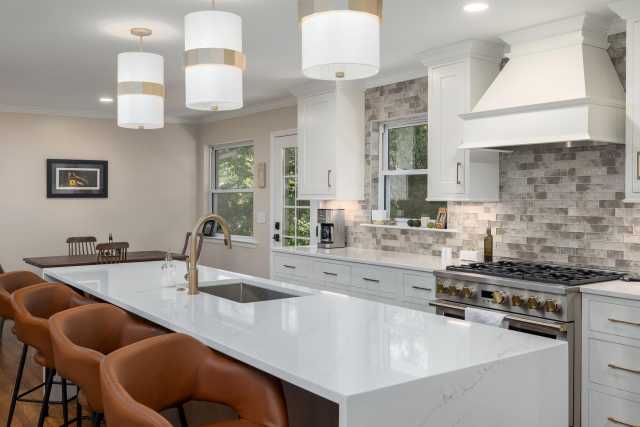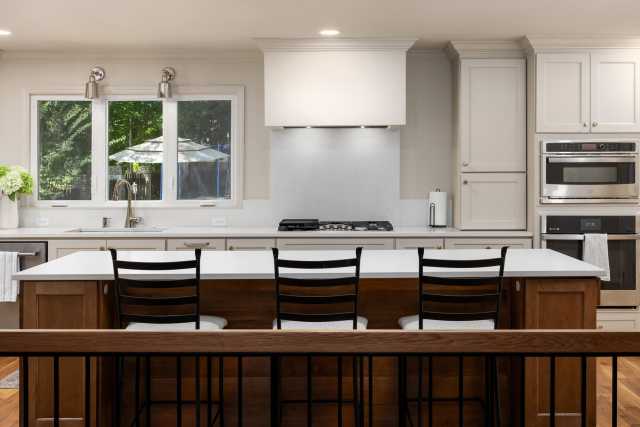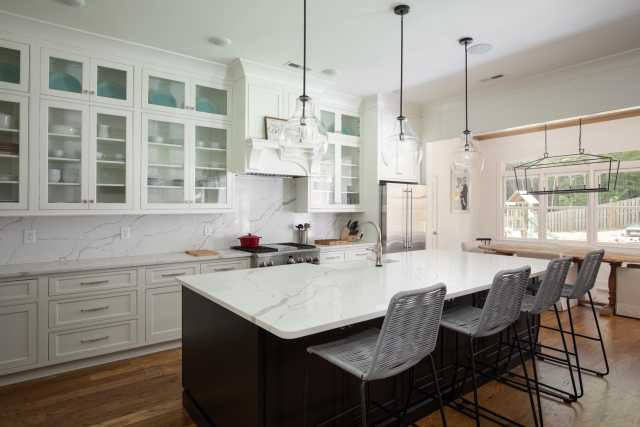The Definitive Guide to Lot Selection for Your Custom Home: A Due Diligence Report - part 3

A Comparative Analysis of Lot Typologies: Infill, Subdivision, and Rural Land
The journey to building a custom home begins with a foundational choice that will shape the entire project: the type of lot. The decision between an infill lot within an established neighborhood, a parcel in a planned subdivision, or a tract of rural land is not merely a matter of preference; it is a strategic choice that dictates the project's budget, design freedom, regulatory complexity, and resulting lifestyle. Each typology presents a unique set of advantages and disadvantages that must be carefully weighed.
The Infill Lot: Building in Established Neighborhoods
An infill lot is a parcel of land located within an existing, developed area. It may be a rare vacant plot that was never built upon, or more commonly, a property where an older, underutilized structure is torn down to make way for new construction.
- Pros:
- Location and Amenities: The primary advantage of an infill lot is its location. It offers unparalleled proximity to established city centers, workplaces, schools, and a mature ecosystem of amenities like shops and restaurants.
- Existing Infrastructure: All major utilities—water, sewer, electricity, natural gas, and high-speed internet—are typically already present at the street, which can dramatically reduce the high costs associated with utility extensions.
- Sustainability: Infill development is an environmentally conscious choice. It promotes urban revitalization by reusing land and leveraging existing infrastructure, which helps to reduce urban sprawl and preserve undeveloped green spaces.
- Established Community: The character of the neighborhood is a known quantity. The buyer can see the architectural styles, the maturity of the landscaping, and get a feel for the community before committing.
- Cons:
- High Cost: The convenience of the location comes at a premium. The cost per square foot for an infill lot is almost always significantly higher than for suburban or rural land.
- Physical Constraints: Infill lots are often smaller, narrower, and more irregularly shaped than their suburban counterparts. This can pose significant challenges to home design, limit the size of the home and yard, and reduce privacy.
- Regulatory Hurdles: Building in an established neighborhood means navigating a dense web of regulations. These can include restrictive zoning codes, stringent setback requirements, tree protection ordinances, and in some cases, rules imposed by historic preservation districts that can clash with modern architectural designs.
- Construction Challenges: The tight confines of an infill lot create logistical challenges. There is often little to no space for material storage ("laydown") or maneuvering heavy equipment, which can increase construction complexity and labor costs. The noise and disruption to close-by neighbors must also be managed carefully.
- Hidden Site Issues: These lots have a history. It is not uncommon to discover buried debris, remnants of old foundations or septic tanks, or even contaminated soil from past uses. This often necessitates costly "over-excavation" (removing and replacing large amounts of soil) to create a stable building pad.
- Appraisal Challenges: A new, high-value custom home can become a significant outlier in a neighborhood of older, less expensive homes. This creates a "comparable sales" problem for bank appraisers, who may value the property lower than its actual cost to build. This appraisal gap may require the owner to contribute a larger cash down payment to secure financing.
The Subdivision Lot: Predictability and Community
A subdivision lot is a parcel of land located within a larger, master-planned community developed by a single entity. These neighborhoods are characterized by a cohesive design and shared amenities.
- Pros:
- Turnkey Infrastructure: The greatest advantage is predictability. All roads are paved, and all utilities are stubbed directly to the lot line, eliminating the guesswork and high costs of infrastructure extension and creating a streamlined building process.
- Amenities: Many modern subdivisions offer attractive community amenities such as swimming pools, clubhouses, parks, playgrounds, and walking trails, which are maintained by the HOA.
- Community Feel: Subdivisions often foster a strong sense of community, with neighbors who are often in similar life stages and a built-in social environment.
- Predictable Value: Because the homes are similar in age and quality, it is easy to find comparable sales within the neighborhood. This simplifies the appraisal process and makes financing more straightforward.
- Builder Incentives: To attract buyers, developers may offer financial incentives, such as contributing to closing costs, providing upgrade packages, or offering favorable financing through a preferred lender.
- Cons:
- Restrictive Covenants (HOAs): This is the most significant drawback. Subdivisions are governed by Homeowners Associations that enforce a set of legally binding rules known as Covenants, Conditions & Restrictions (CC&Rs). These rules can be extremely strict, dictating everything from architectural style and exterior paint colors to landscaping choices, fence types, and even where you can park vehicles, severely limiting personalization and design freedom.
- Lack of Uniqueness: The strict design guidelines can lead to a monotonous, "cookie-cutter" appearance throughout the neighborhood. Lots are also typically smaller and positioned closer together, offering minimal privacy.
- Limited Builder Choice: In many cases, the developer owns all the lots and requires buyers to use their designated builder, removing the buyer's choice in who manages their largest investment.
- Immature Landscaping: The development process typically involves clear-cutting the land of all existing vegetation. This means new homes are surrounded by young saplings and immature landscaping, and it can take decades for the neighborhood to develop a mature tree canopy.
- Higher Taxes: To finance the construction of new roads, sewers, and other public infrastructure, new developments are often located within special tax districts (like Mello-Roos districts in California or Metropolitan Districts in Colorado). This can result in significantly higher annual property tax bills compared to established areas.
The Rural Land: Space, Privacy, and Freedom
- Rural land consists of larger, undeveloped parcels located outside of established towns and subdivisions, often referred to as "building on your own land".Pros:
- Space and Privacy: Rural lots offer an unparalleled sense of space and seclusion. With large acreages, there are significant buffer zones from neighbors, providing ultimate privacy and ample room for expansive outdoor living areas, large gardens, workshops, or even guest houses.
- Lower Land Cost: On a per-acre basis, rural land is significantly more affordable than land in urban or suburban locations, allowing buyers to acquire much larger properties.
- Design Freedom: This is a primary appeal. With few, if any, HOA restrictions or prescriptive design codes, the owner has complete architectural freedom to design and build a home that is truly unique and perfectly tailored to their vision.
- Connection to Nature: Building on a rural lot provides direct and immersive access to the natural environment, with opportunities for recreation and enjoying scenic views right outside the door.
- Cons:
- Infrastructure Costs: This is the single greatest challenge and financial risk of building on rural land. The owner is solely responsible for the full, and often substantial, cost of bringing all necessary infrastructure to the site. This includes drilling a private water well, designing and installing a complete septic system, running electrical and gas lines (often over long distances), and constructing a long driveway for access. These costs can easily add $50,000 to $100,000 or more to the project budget.
- Extensive Site Preparation: Raw, untouched land requires significant preparation before construction can begin. This includes clearing trees, removing rocks and debris, and extensive grading and earthwork to create a stable, level building pad.
- Accessibility and Services: Rural properties can be located far from everyday amenities like grocery stores, schools, and hospitals. Emergency service (police, fire, ambulance) response times may be significantly longer. Access roads may be unpaved and poorly maintained, especially in inclement weather.
- Zoning Surprises: While generally less restrictive than urban zoning, rural zoning can still hold unpleasant surprises. For example, an adjacent property may be zoned for agricultural uses, which could permit livestock, farming operations, or other activities that might impact a residential quality of life.
- Financing and Resale: Lenders can be more hesitant to provide financing for raw, undeveloped land compared to an improved lot in a subdivision. Similarly, the unique nature of a rural custom home can mean a smaller pool of potential buyers upon resale, potentially leading to longer market times.
The choice between these lot types is ultimately a decision about fundamental trade-offs. There is an inverse relationship between the purchase price of a lot and its required development cost. Rural land typically has a low purchase price but demands high investment in development, while an infill lot has a very high purchase price but leverages existing, paid-for infrastructure. Similarly, there is an inverse relationship between design freedom and process burden. Rural land offers maximum design autonomy but places the entire burden of managing a complex development project on the owner. A subdivision lot offers minimal design freedom but provides a predictable, low-burden process managed by the developer. This means the choice of lot typology is fundamentally a choice about where the prospective homeowner wants to allocate their two most valuable resources: capital and effort. Aligning this choice with one's personal financial capacity, risk tolerance, and desire for hands-on management is the key to a successful outcome.
Feature | Infill Lot | Subdivision Lot | Rural Land |
Land Purchase Cost | High to Very High | Moderate | Low to Moderate |
Site Prep & Utility Costs | Low to Moderate | Very Low | High to Very High |
Design Freedom | Moderate (Limited by zoning & lot size) | Low (Limited by HOA/CC&Rs) | Very High |
Privacy | Low | Low to Moderate | Very High |
Proximity to Amenities | Very High | Moderate to High | Low |
Regulatory Complexity | High (Zoning, historic, etc.) | High (HOA rules) | Low to Moderate (Zoning, environmental) |
Financing/Appraisal | Can be challenging due to comps | Straightforward | Can be challenging for raw land |
Personal Effort/Management | High | Low | Very High |





